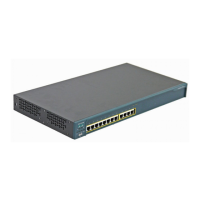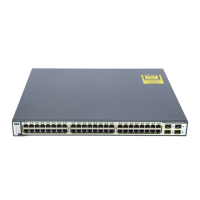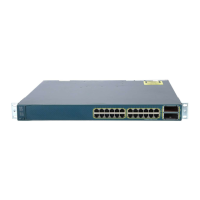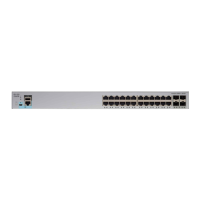23-24
Catalyst 6500 Series Switch Software Configuration Guide—Release 8.7
OL-8978-04
Chapter 23 Configuring Redundancy
MSFC Redundancy
The Layer 3 entries that are programmed by the failed MSFC on the active supervisor engine are used
until they gracefully age out and are replaced by the Layer 3 entries that are populated by the newly
active MSFC. Aging takes 4 minutes and allows the newly active MSFC to repopulate the MLS entries
using its XTAG value, while concurrently hardware-switching flows that are yet to be aged. In addition,
this process prevents a newly active MSFC from being overwhelmed with the initial flow traffic.
Note Each MSFC has its own XTAG value to identify itself as the MLS Route Processor. MSFC #1 (on the
active supervisor engine) has an XTAG of 1, and MSFC #2 (on the standby supervisor engine) has an
XTAG of 2.
Only Supervisor Engine 1 uses the XTAG values; XTAG values are not used on Supervisor Engine 2.
Caution For same-chassis Layer 3 redundancy to function as expected, the configuration on each MSFC must be
the same (see Table 23-2 on page 23-22).
Note Table 23-2 lists the configuration exceptions. For example, in Figure 23-1, there are 4 MSFCs on
VLAN 10; each MSFC has different IP addresses and HSRP priorities.
Access Control List Configuration
If you use the Cisco IOS access control lists (ACLs) on the MSFC, you must configure the ACLs on both
MSFCs identically, globally, and at the interface level. Only the designated MSFC (the MSFC to come
online first or the MSFC that has been online the longest) programs the PFC with ACL information.
The active supervisor engine’s PFC multilayer switches the packets (CEF [Cisco Express Forwarding]
for PFC2) after consulting with its ACL ASIC to determine whether a packet is forwarded or not,
depending on the Cisco IOS ACL that is configured. If a designated MSFC fails, the new designated
MSFC must reprogram the PFC for static ACLs. For consistent results, both MSFCs must have identical
ACL configurations, including the static ACLs.
Note In addition to defining the same ACLs on both MSFCs, you must also apply the ACLs to the same VLAN
interfaces on both MSFCs.
Note The dynamic and reflexive ACLs, which are based on the actual data flow, may be programmed by either
MSFC.
Note PFC: For detailed information on the hardware and software handling of the Cisco IOS ACLs with the
PFC, see the “Hardware and Software Handling of Cisco IOS ACLs with PFC” section on page 15-10.
Note PFC2: For detailed information on the hardware and software handling of the Cisco IOS ACLs with
PFC2, see the “Hardware and Software Handling of Cisco IOS ACLs with PFC2 and
PFC3A/PFC3B/PFC3BXL” section on page 15-13.
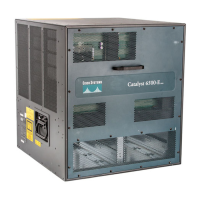
